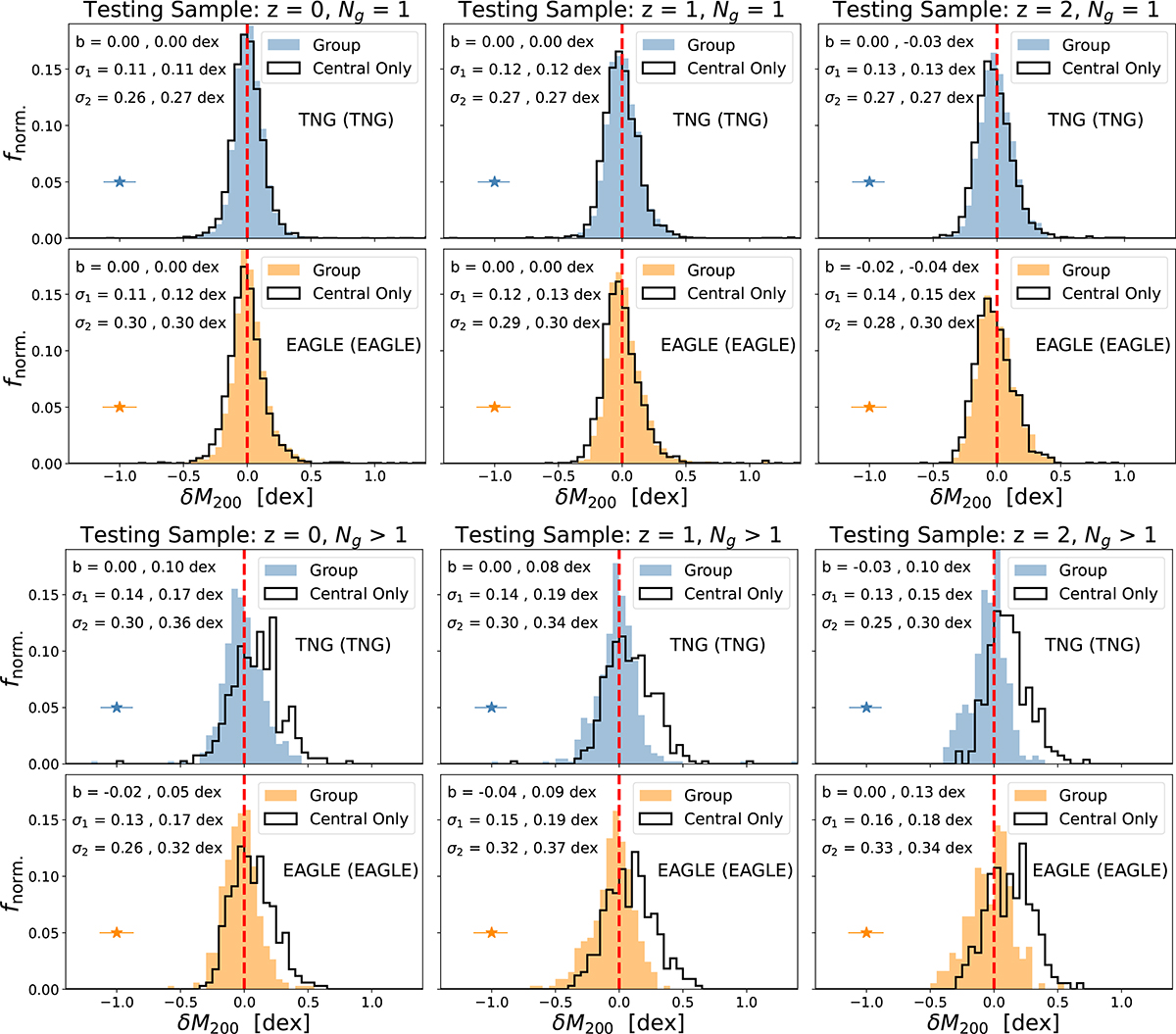Fig. 8.

Download original image
Halo mass recovery performance with DfL IIb. Distributions in the offsets from true-to-predicted M200 values (δM200), shown here for single galaxy groups (top panels) and multi-galaxy groups (bottom panels). In each panel the distributions in halo mass offsets are shown for the full group RF model (shaded histograms) and compared to the central-only RF model (open black histograms), both of which are outputs from DfL. Statistics are presented in each panel for the group model, followed by the central only model. In the case of single galaxy groups, the two distributions are very similar, as expected. However, for multi-galaxy groups, the two halo mass offset distributions are significantly different. The central-only RF models yield halo masses which are biased to higher values of δM200 (lower values of M200 predicted) and have a higher dispersion relative to the group results. Moreover, the full group RF models have significantly better agreement with the true halo masses from each simulation. This demonstrates the critical importance of incorporating the group information into the DfL pipeline and hence justifies the need for the two stage approach, discussed in Section 3.
Current usage metrics show cumulative count of Article Views (full-text article views including HTML views, PDF and ePub downloads, according to the available data) and Abstracts Views on Vision4Press platform.
Data correspond to usage on the plateform after 2015. The current usage metrics is available 48-96 hours after online publication and is updated daily on week days.
Initial download of the metrics may take a while.


